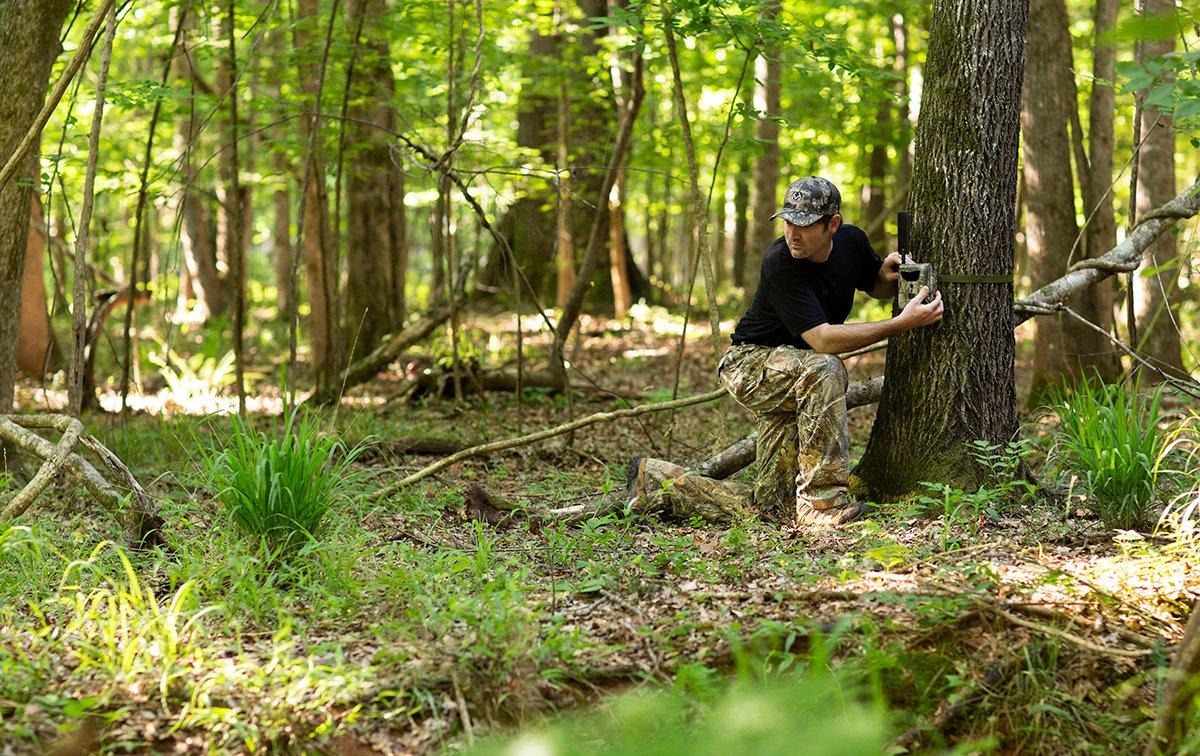To get the most out of your scouting, set your cameras up for quality photos with minimal impact
Trail cameras can be great tools to aid in your success as a deer hunter, and hunters love to use them in the summer. But they can become too much of a good thing, too. Using them incorrectly can be a detriment to your hunting efforts. Applying these tactics in the summer can help you get better photos and improve your odds of tagging a buck when the season opens.
Don't Get Too Intrusive
When it comes to running trail cameras in the summer, it's important to leave deer as undisturbed as possible. This means not jumping into the hotspots where you'll actually be hunting and instead sticking to the fringes, food sources and easy-to-access areas. Brandon Adams from Major League Bowhunter applies this to his summer tactics. I want to leave the deer alone; they're going to get pounded soon enough and I don't need to start in July, he said. You're probably hurting your chances of having a mature buck stick around by placing your cameras deep in the timber or in those hard-to-access spots that you have to cross a lot of ground to reach.
Realtree pro-staffer Greg Miller added: The greatest benefit of trail cameras is that they allow us to monitor deer activity within our hunting areas day in and day out for indefinite amounts of time. Which means there's really no need to continually invade our hunting areas to check our cameras or, even worse, stomp around in those areas in search of 'better spots' to place our cameras.
Remember, Miller said, that even though opening day of hunting season may be weeks or months away, mature whitetail bucks will tolerate only so much human intrusion before altering their patterns or relocating to other areas altogether.
(Don't Miss: 5 Advanced Trail Camera Tactics)
Use Attractants for Better Photos
Where legal, using attractants in front of trail cameras can help capture better photos. Water holes, Big & J or minerals can draw bucks to a specific spot in front of your camera, but what's really nice about using attractants is that you can place them in easy-to-access areas. In a perfect world, you'll be able to pull your ATV or truck practically right up to the site, swap the SD card, and be on your way. With minimal intrusion, bucks will spend more time at your mineral sites, allowing for the best photos possible. Miller suggests using feed or mineral in block form. Blocks usually last quite a while, which means I don't have to replenish them or check my cameras nearly as often, he said. If you live in an area where it's not legal to bait or use mineral, making mock scrapes is another great tool for capturing better photos.
(Don't Miss: Are Trail Cameras Affecting Your Hunting Experience?)
Try a Cell Cam
Cellular cameras are game changers for many deer hunters. You can place them in areas that you normally wouldn't because of intrusion. You can get them up early in one of those hotspots near the center of a hunting property, or they can allow you to reduce the pressure on a property as a whole through the duration of the summer. The vast majority of properties I hunt have little service for them, but cell cameras still have advantages (where they work), Adams said. They can last you all summer over a trail or on the edge of a crop field, where baiting isn't necessary. Being able to collect information through the summer without entering your hunting area is extremely valuable.
When it comes down to it, trail cameras are meant to help you as a deer hunter, but don't make them counterproductive.
(Don't Miss: The Most Effective Trail Camera Plan for Deer Hunting)








